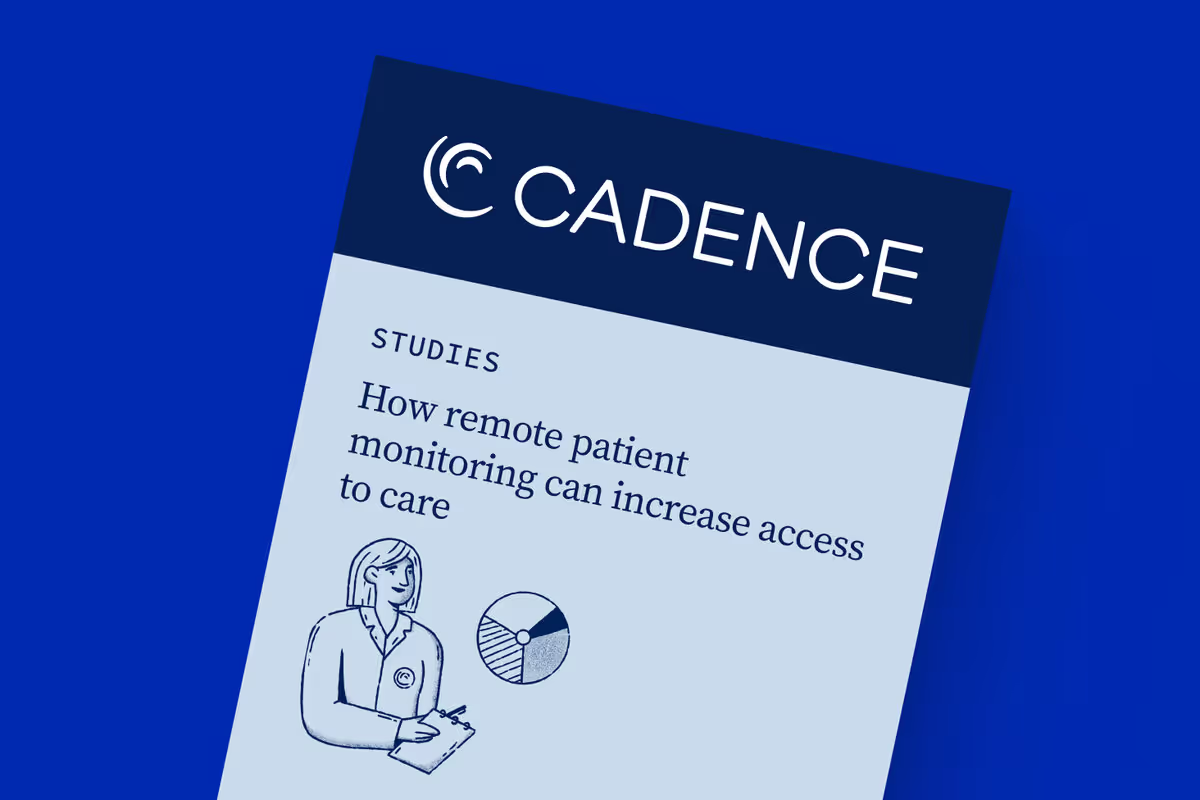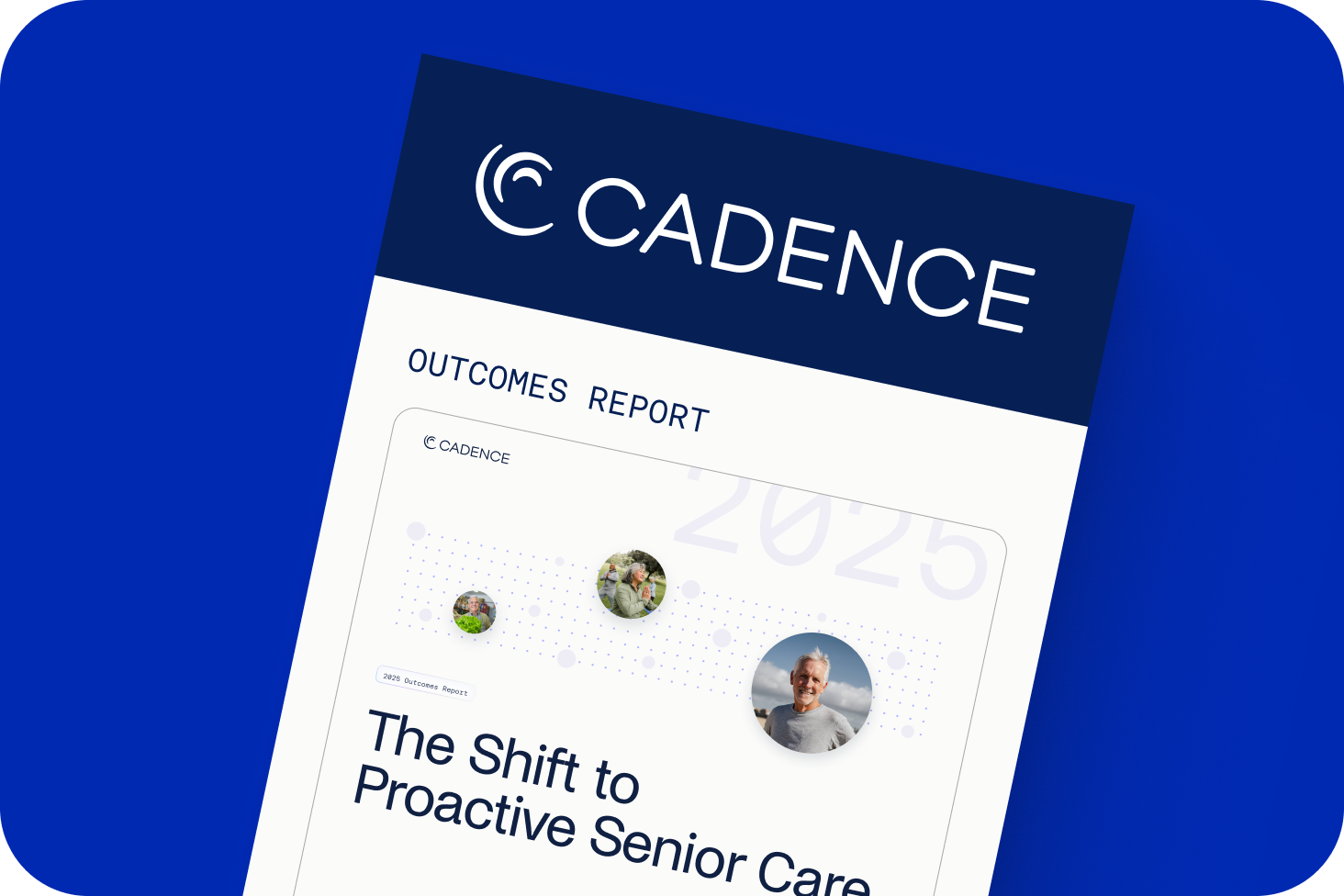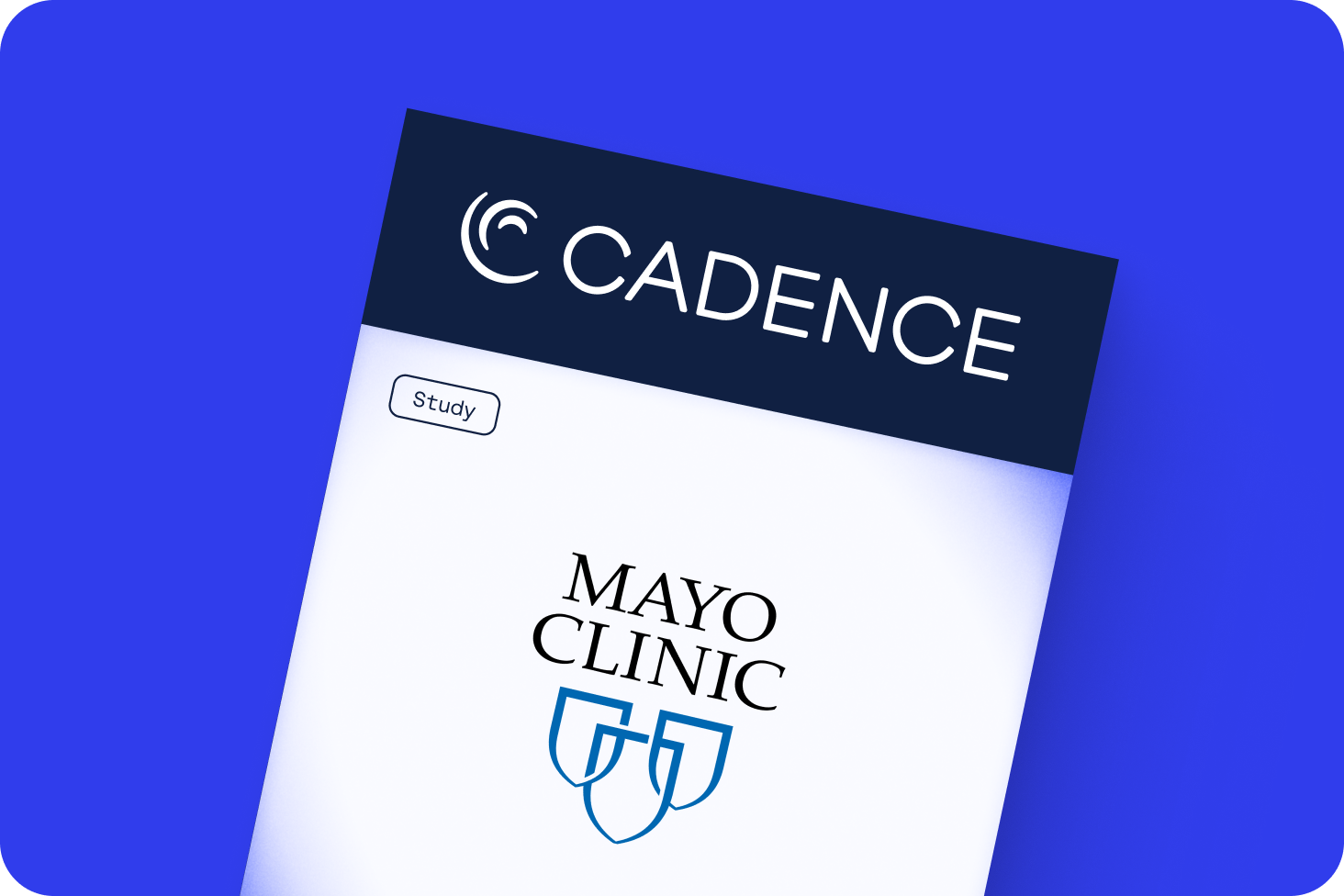How remote patient monitoring (RPM) can increase access to care

As the COVID-19 pandemic sweeps through the world, healthcare providers and patients are struggling to reconcile the need for continuity in care with the risks posed by the coronavirus. The crisis has also shed light on existing issues with access to care faced by patients in rural, hard-to-reach areas. Some of these problems can be solved by remote patient monitoring (RPM): a technology solution that collects patient data from devices such as weight scales and blood pressure monitors and transmits them wirelessly to providers, who can intervene when clinically necessary.
How Remote Patient Monitoring Works
Cadence’s RPM process begins when a physician identifies a patient with one of these four chronic conditions: congestive heart failure, type-2 diabetes, hypertension or chronic obstructive pulmonary disease (COPD). Once the doctor determines that the patient is a good fit for the RPM program, they refer the patient to a Cadence patient educator for enrollment. The patient educator equips the patient with cellular-enabled devices and teaches him or her how to operate them. Once enrolled, the patient begins weighing themselves and monitoring their blood pressure daily from their own home.
The readings are transmitted into Cadence’s monitoring system via cellular technology and are visible to both the Cadence clinicians and the ordering physician. Leveraging the daily vital information captured by the monitoring system, Cadence clinicians (i.e. nurse practitioners) can ensure a patient’s condition is stable. When the ordering physician determines adjustments need to be made, Cadence clinicians uses nationally recognized, evidence-based guidelines to optimize a patient’s medication regimen. In this way, the Cadence clinical team serves as an extension of the ordering physician's care. Cadence clinicians communicate any changes to the patient via texts and phone calls and to the ordering provider via an automated document highlighting the clinical data and interventions.
Why the Use of RPM Is On the Rise

In the COVID-19 era, visiting a doctor’s office or a hospital carries the risk of coronavirus exposure, which is particularly dangerous for patients with chronic conditions. The four conditions that Medicare currently covers for RPM — congestive heart failure, type-2 diabetes, hypertension, and COPD — are listed by the Centers for Disease Control and Prevention among those that also predispose people to an increased risk for severe COVID. Hence, RPM has become more popular in recent years because it limits the need for unnecessary in-person office visits for susceptible, high-risk patients.
The pandemic does not seem to be going away, and the same applies to the demand for RPM. The technology complements and strengthens traditional telehealth, whose use has also increased dramatically in light of COVID-19. “Telehealth was safe, it worked, but in order to really make it work, you have to fuel telehealth with remote patient monitoring,” said Dr. Ted Feldman, Chief Medical Officer at Cadence. "You need data to better support your clinical decisions. A video-visit in isolation is not enough!"
How RPM Helps Physicians
Even before the pandemic, physicians had to manage high volumes of complex patients under intense time pressures. COVID has made it even more challenging to navigate these demands within the confines of limited space and social distancing rules. RPM helps to prevent unnecessary in-office visits — which translates into time and cost savings for physicians. For example, a 2022 review published in Value in Health found that RPM helped to reduce costs in the management of hypertension. A 2018 study published in the same journal demonstrated similar benefits of the technology for chronic heart failure.
When physicians do see their RPM patients during in-person visits, they are much better informed thanks to the data collected by the program. “We are 100 percent transparent to our physician partners,” said Susan Mackin, Head of Care Delivery at Cadence. “They can see exactly what we've done in between visits. They have access to every clinical note we write in their electronic medical record.”
Finally, as RPM providers like Cadence can support physicians by helping provide care for those who are doing well, providers are able to free up valuable in-person time for those patients who are experiencing the most critical issues. "The benefit is they're getting to see the right patients when they need to," Mackin says. "So if Cadence is taking care of a patient who doesn't really need to be seen [in-person] today because we can help them, that allows another patient who is really sick to get in."
How Remote Patient Monitoring Helps Patients
The advantages of RPM also extend to patients. One major benefit involves expanding access to care to those who live in rural, hard-to-reach areas. Instead of having to drive miles to see their doctor, patients can have their health monitored in the comfort of their home. This matters even more now that the COVID-19 pandemic has exacerbated the ongoing crisis of rural hospital closures, thereby further limiting access.
“People in rural parts of the country can now have more continuity of care than they might otherwise have been able to receive given the distances and travails of getting to an office,” said Dr. Randy Curnow, Medical Director at Cadence.
How Cadence Leverages Technology to Provide Remote Healthcare
Cadence distinguishes itself from other RPM programs in several ways. First, the company supports both the patient and the physician through its integrated care delivery program.
“We are an extension of the patient's physician,” Dr. Curnow said. "This is unlike other RPM companies, which merely collect the data and then send it to their customers — who tend to be employers or insurers. Cadence, on the other hand, partners directly with large health systems and their physicians to gather the data, review it, and intervene where clinically necessary to improve patient outcomes and quality of life."
"Cadence is able to help identify potential patient instability more quickly, which can lead to clinical interventions, such as medication adjustments or visits to a patient's physician for stabilization. This, in turn, can help decrease the need for emergency room visits or hospitalizations, which are a driver of increased health care costs to patients," he continued.
In addition, Cadence offers in-person enrollment. “Most RPM companies mail you a box and say, ‘Here you go, set it up,’” Mackin said. “We walk you through it step by step and ensure patients are set up for success."
Specifically, Cadence’s patient educators employ the so-called ‘teach-back’ method. During the enrollment appointment, the patient educator has patients actually use the equipment to ensure they know how to proceed at home. Helping patients to retain the protocol is key: According to research cited by the Agency for Healthcare Research and Quality, patients tend to immediately forget as much as 40 to 80 percent of the information communicated to them during office visits.
Finally, Cadence's easy-to-use, cell-enabled devices eliminate the need to connect to Wi-Fi or any other external network. “You don't have to open up an app,” Dr. Feldman said. “You don't have to have a smartphone. You don't have to have a computer.” Cadence is therefore supporting access to care for patients, irrespective of their savviness with technology, and thereby hoping to reduce health disparities as a result.
All these unique advantages translate into strong patient adherence. As Mackin points out, 90 percent of all patients enrolled in Cadence's program end up using their devices every day. Additionally, 91 percent of patients attend their follow-up visits.
Patients seem satisfied with the results. “I’m one happy camper right now, and I am feeling better every day,” said David from Morganton, North Carolina.






